Abstract
The equilibrium adhesion of a cell or vesicle to a substrate is analyzed in a theoretical model in which two types of mobile molecules in the cell membrane are of interest: receptors that can form bonds with fixed ligands in the substrate and repellers that repel the substrate. If the repulsion between the repeller molecule and substrate is greater than kT, there is substantial redistribution of the repellers from the contact area. Coexisting equilibrium states are observed having comparable free energies (a) with unstretched bonds and repeller redistribution and (b) with stretched bonds and partial redistribution.
Full text
PDF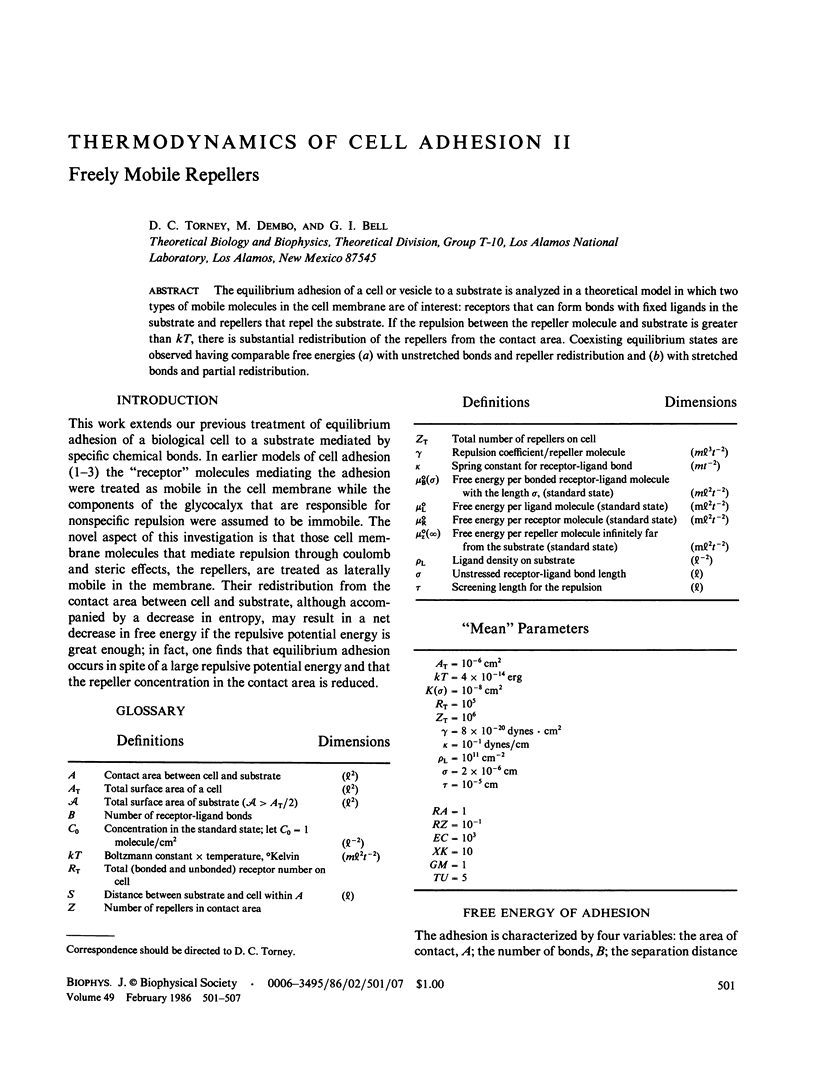
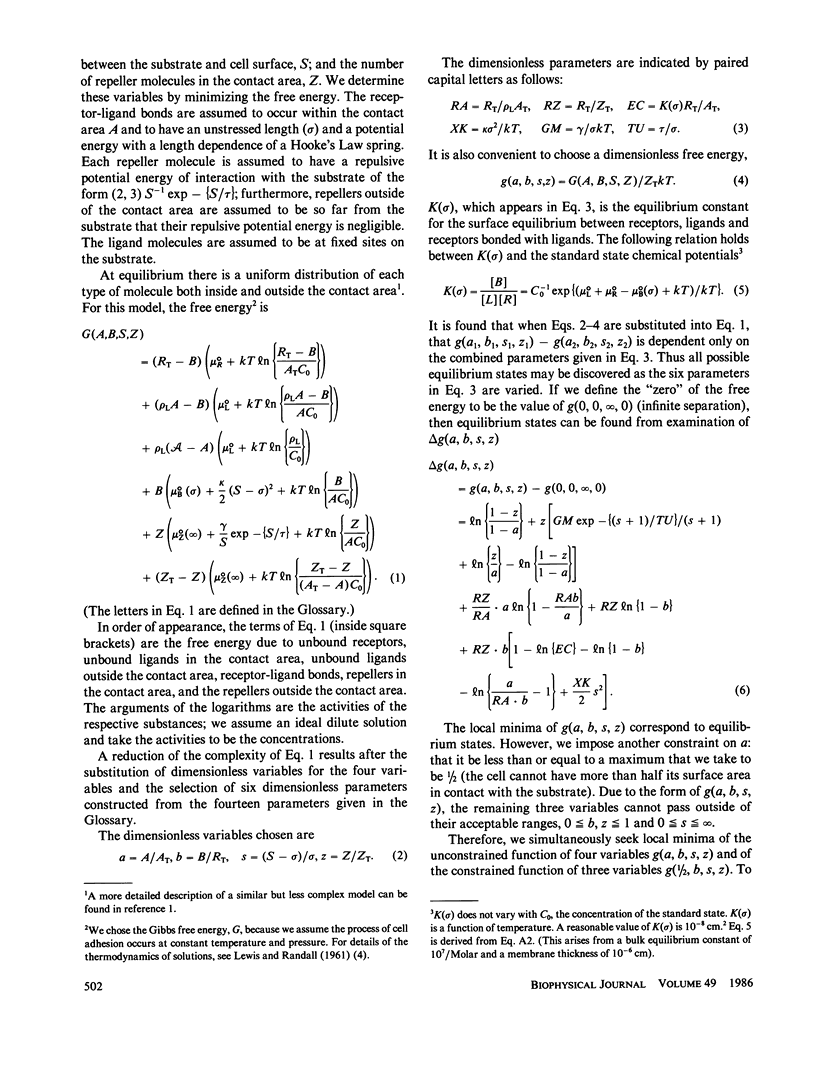
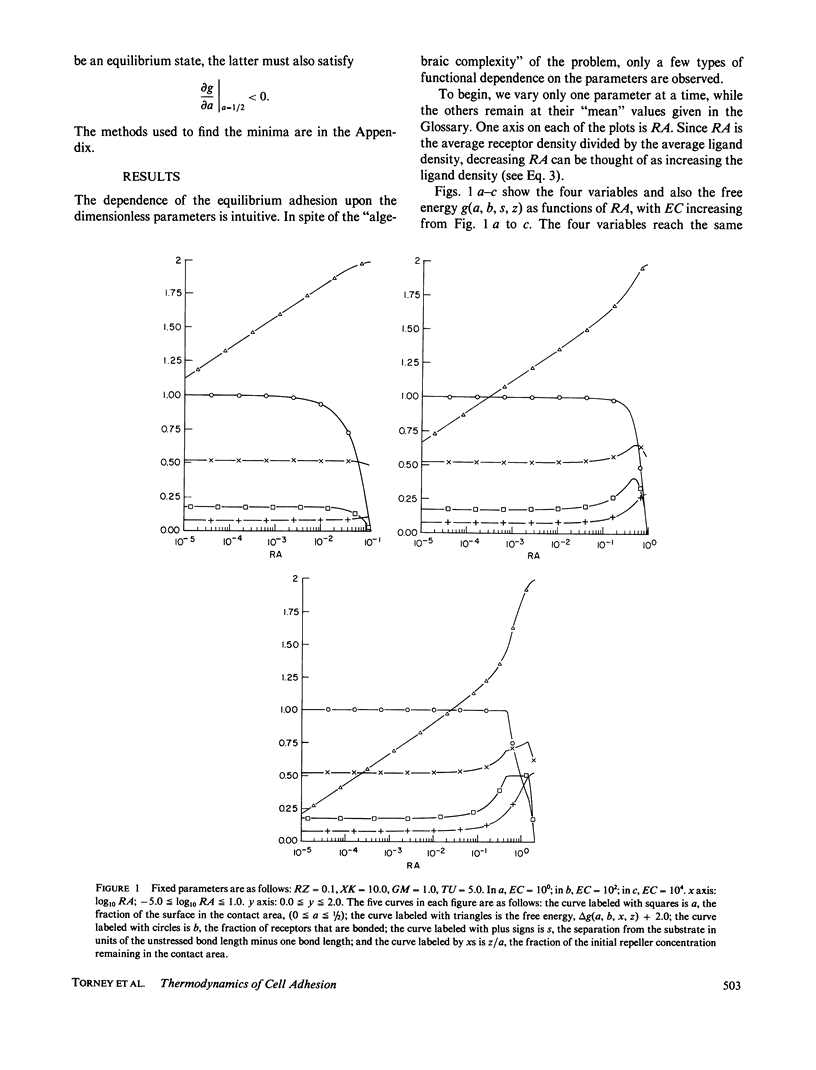
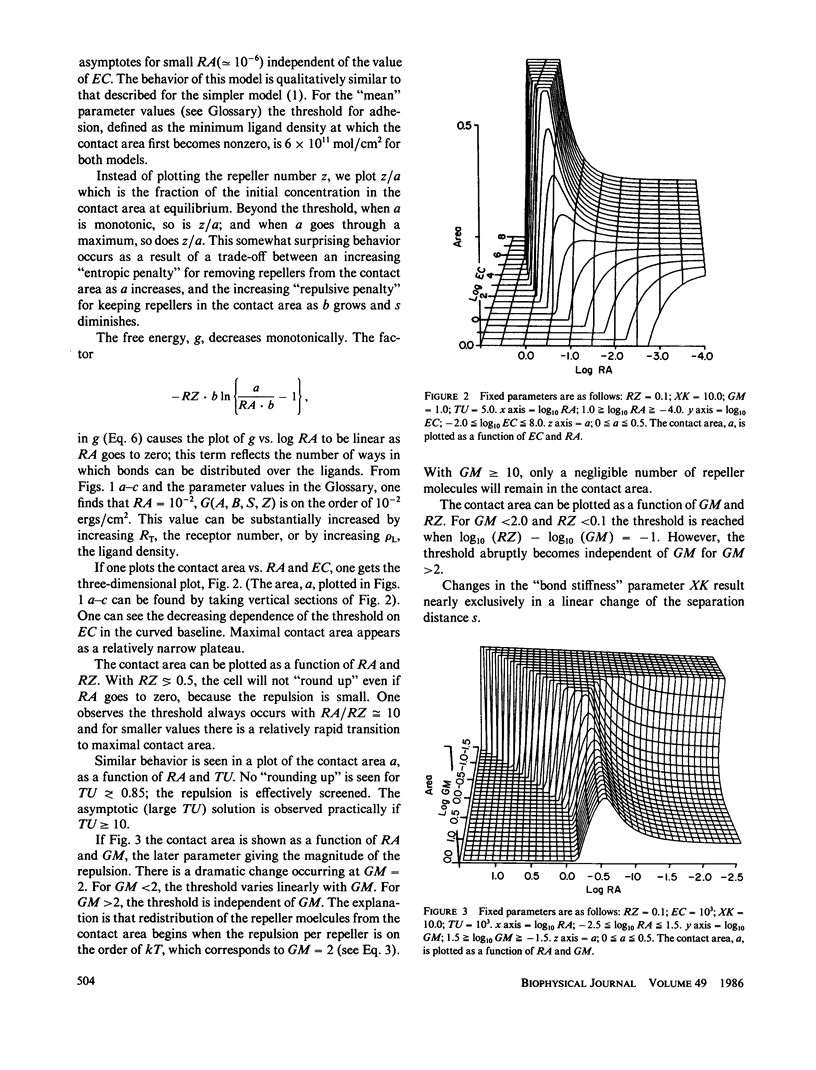
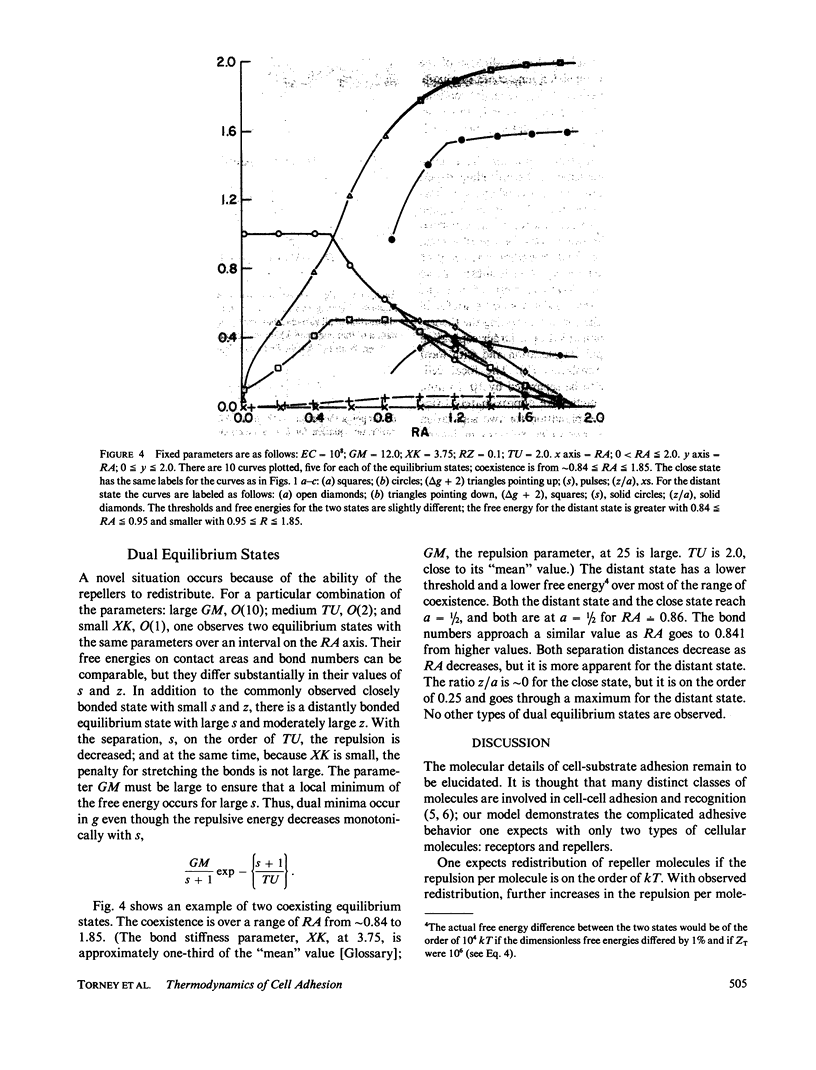
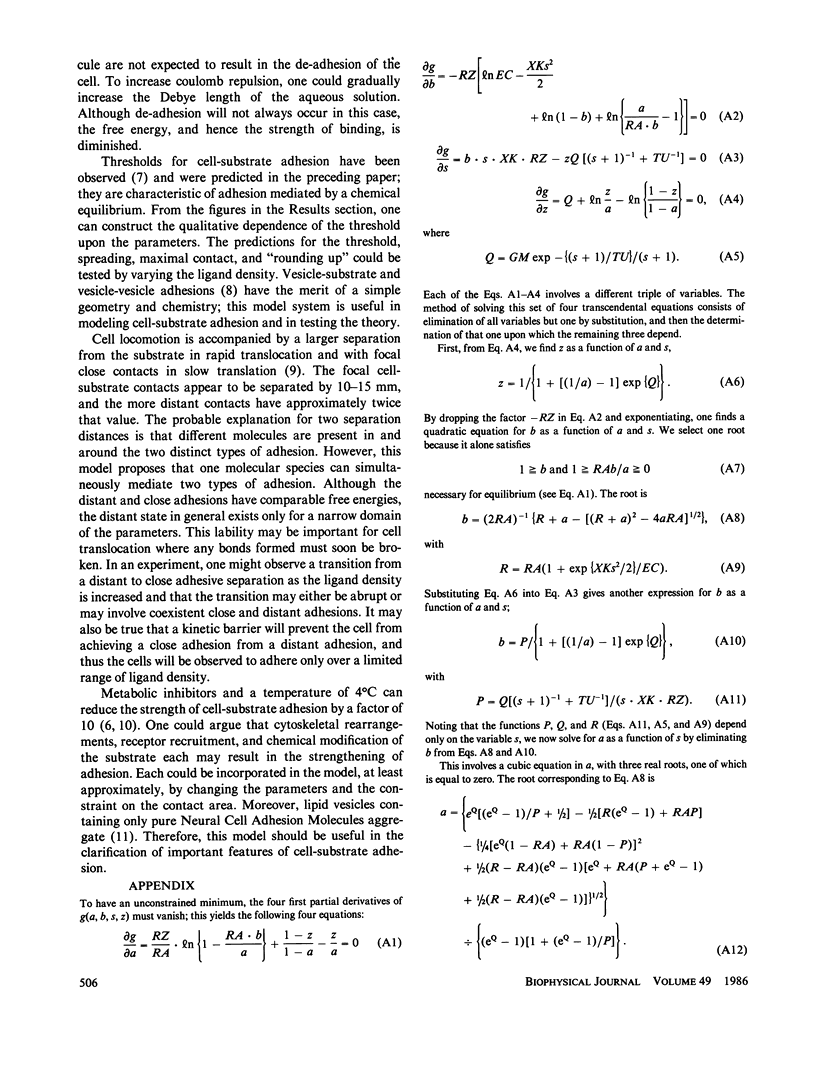
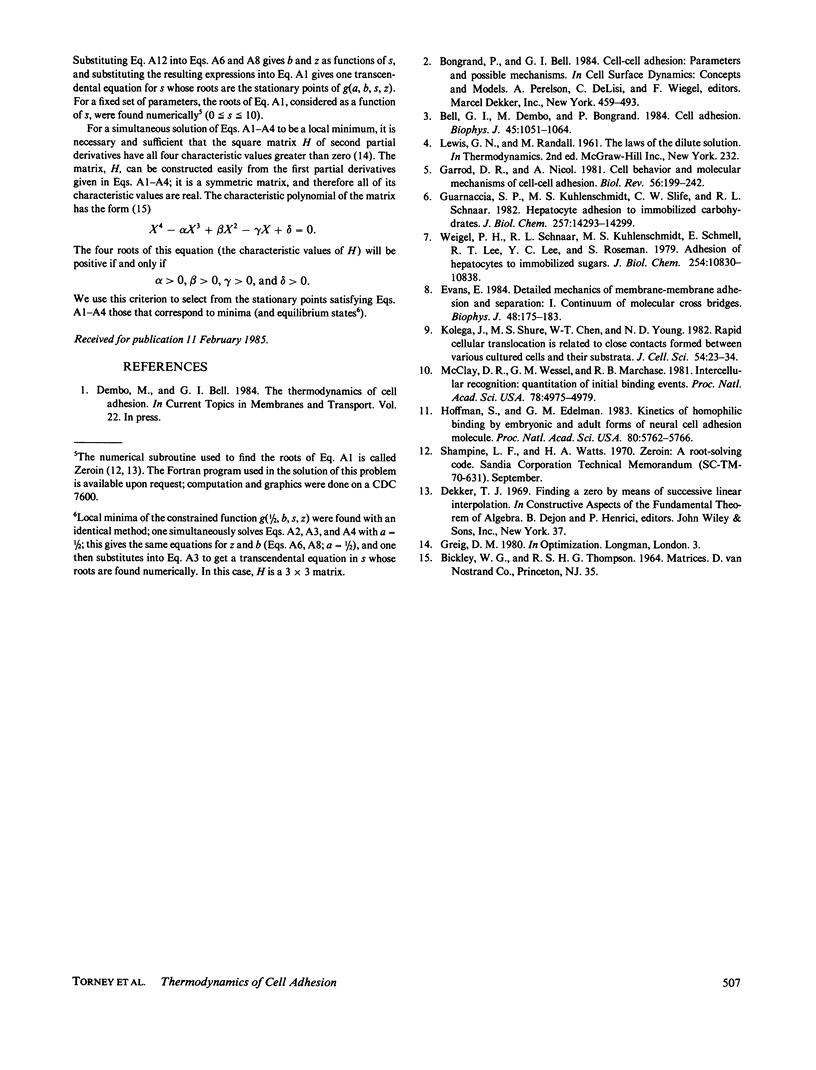
Selected References
These references are in PubMed. This may not be the complete list of references from this article.
- Bell G. I., Dembo M., Bongrand P. Cell adhesion. Competition between nonspecific repulsion and specific bonding. Biophys J. 1984 Jun;45(6):1051–1064. doi: 10.1016/S0006-3495(84)84252-6. [DOI] [PMC free article] [PubMed] [Google Scholar]
- Evans E. A. Detailed mechanics of membrane-membrane adhesion and separation. I. Continuum of molecular cross-bridges. Biophys J. 1985 Jul;48(1):175–183. doi: 10.1016/S0006-3495(85)83770-X. [DOI] [PMC free article] [PubMed] [Google Scholar]
- Garrod D. R., Nicol A. Cell behaviour and molecular mechanisms of cell-cell adhesion. Biol Rev Camb Philos Soc. 1981 May;56(2):199–242. doi: 10.1111/j.1469-185x.1981.tb00348.x. [DOI] [PubMed] [Google Scholar]
- Guarnaccia S. P., Kuhlenschmidt M. S., Slife C. W., Schnaar R. L. Hepatocyte adhesion to immobilized carbohydrates. II. Cellular modification of the carbohydrate surface. J Biol Chem. 1982 Dec 10;257(23):14293–14299. [PubMed] [Google Scholar]
- Hoffman S., Edelman G. M. Kinetics of homophilic binding by embryonic and adult forms of the neural cell adhesion molecule. Proc Natl Acad Sci U S A. 1983 Sep;80(18):5762–5766. doi: 10.1073/pnas.80.18.5762. [DOI] [PMC free article] [PubMed] [Google Scholar]
- Kolega J., Shure M. S., Chen W. T., Young N. D. Rapid cellular translocation is related to close contacts formed between various cultured cells and their substrata. J Cell Sci. 1982 Apr;54:23–34. doi: 10.1242/jcs.54.1.23. [DOI] [PubMed] [Google Scholar]
- McClay D. R., Wessel G. M., Marchase R. B. Intercellular recognition: quantitation of initial binding events. Proc Natl Acad Sci U S A. 1981 Aug;78(8):4975–4979. doi: 10.1073/pnas.78.8.4975. [DOI] [PMC free article] [PubMed] [Google Scholar]
- Weigel P. H., Schnaar R. L., Kuhlenschmidt M. S., Schmell E., Lee R. T., Lee Y. C., Roseman S. Adhesion of hepatocytes to immobilized sugars. A threshold phenomenon. J Biol Chem. 1979 Nov 10;254(21):10830–10838. [PubMed] [Google Scholar]


